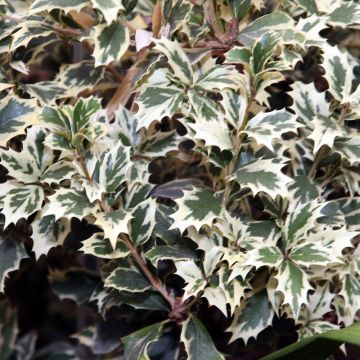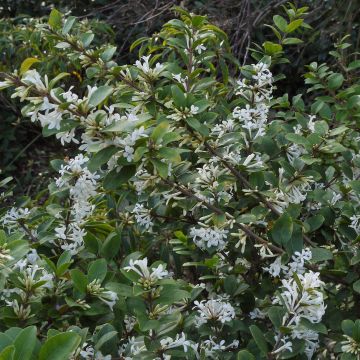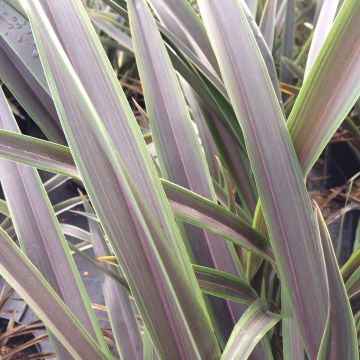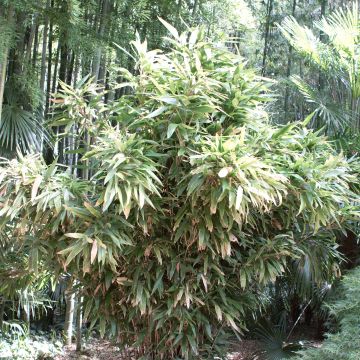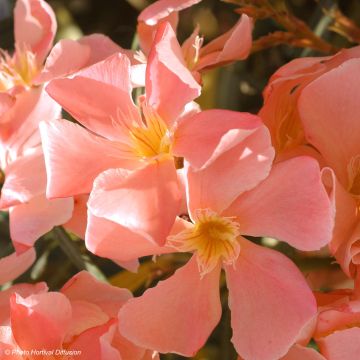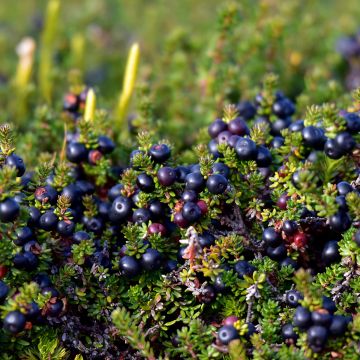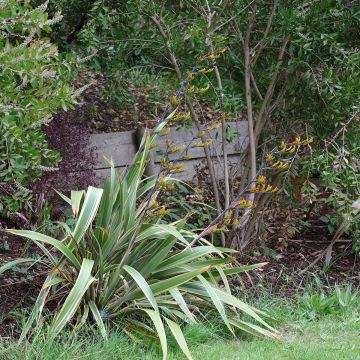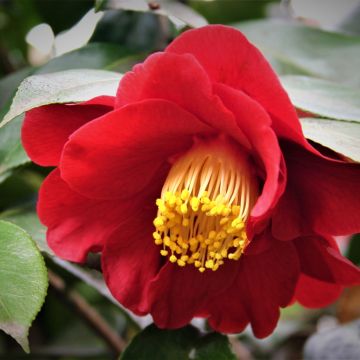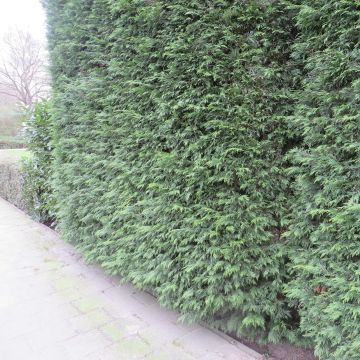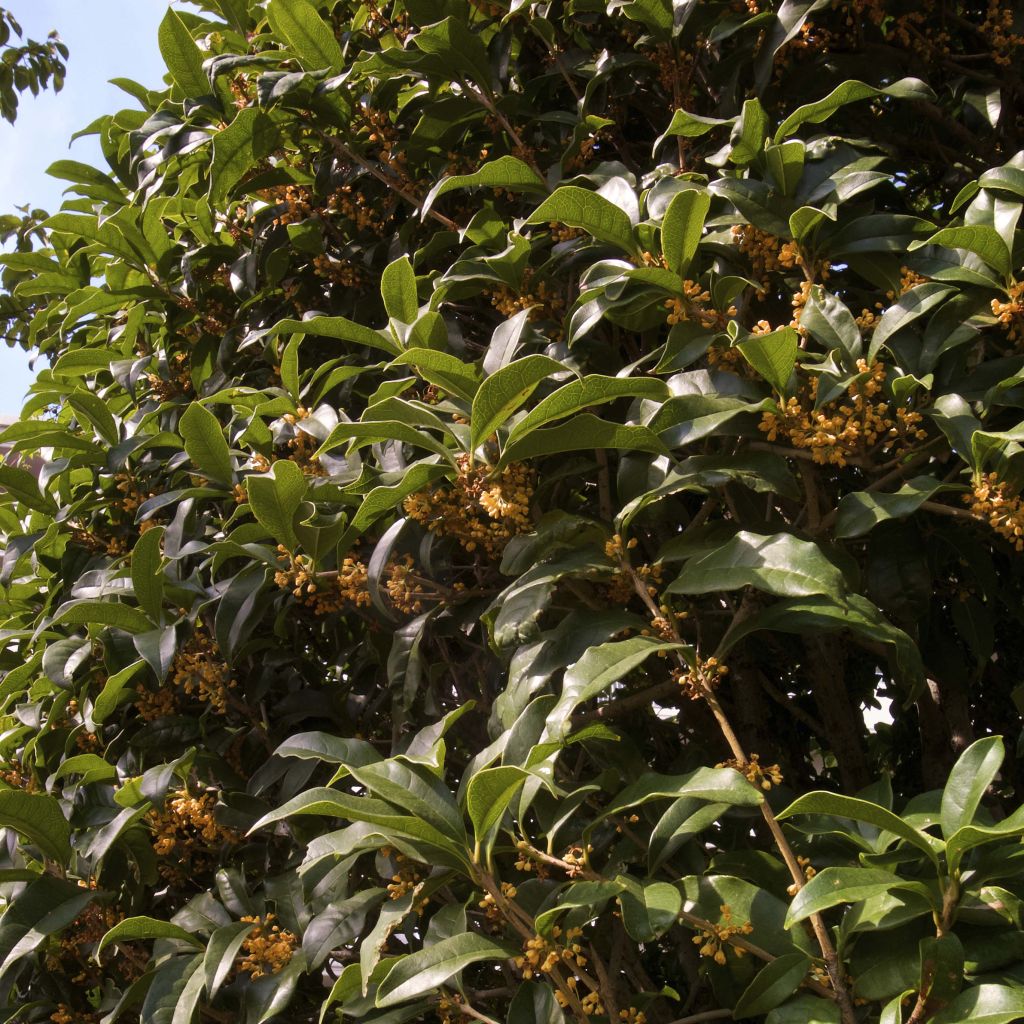

Osmanthus fragrans f. aurantiacus
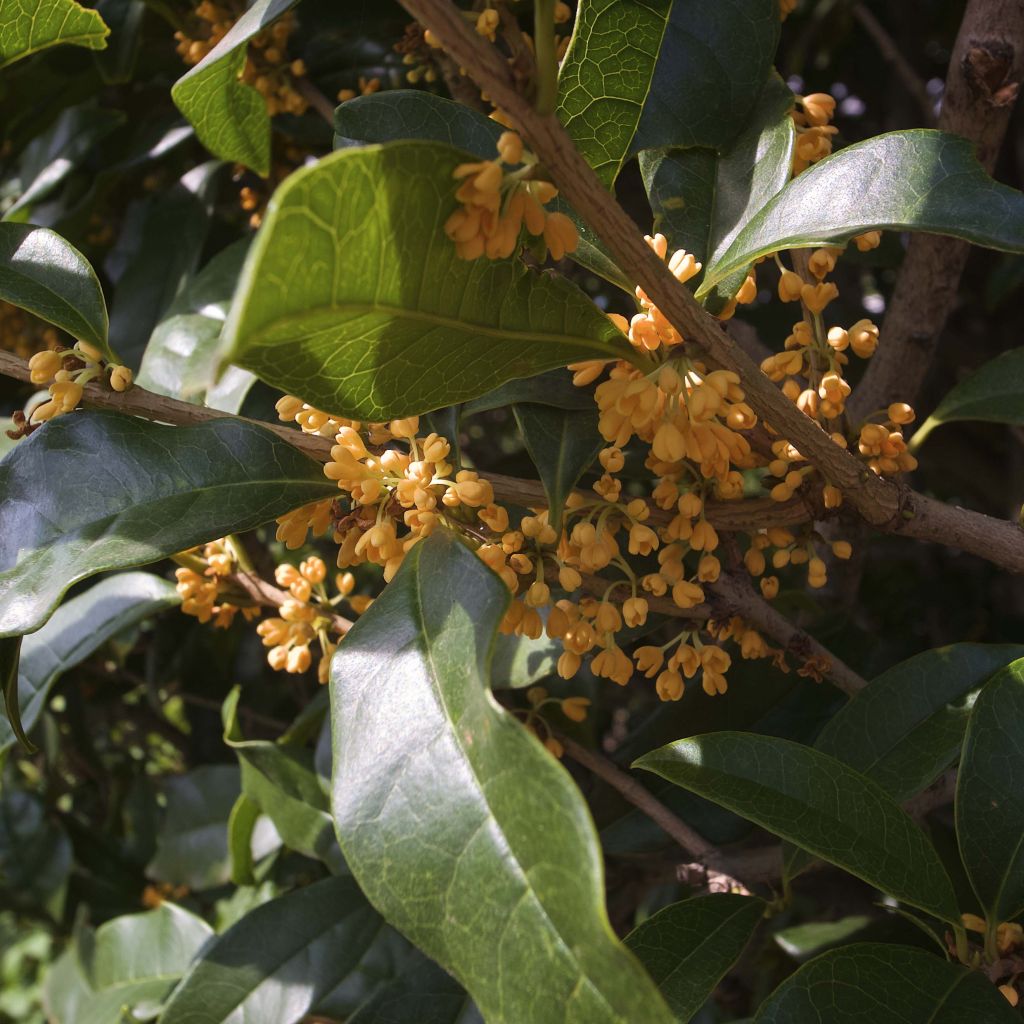

Osmanthus fragrans f. aurantiacus
Osmanthus fragrans f. aurantiacus
Osmanthus fragrans var. aurantiacus
Sweet Osmanthus, Fragrant Olive, Tea Olive, Sweet Olive
Fast delivery, careful packaging.
Chris, 13/10/2024
Special offer!
Receive a €20 voucher for any order over €90 (excluding delivery costs, credit notes, and plastic-free options)!
1- Add your favorite plants to your cart.
2- Once you have reached €90, confirm your order (you can even choose the delivery date!).
3- As soon as your order is shipped, you will receive an email containing your voucher code, valid for 3 months (90 days).
Your voucher is unique and can only be used once, for any order with a minimum value of €20, excluding delivery costs.
Can be combined with other current offers, non-divisible and non-refundable.
Home or relay delivery (depending on size and destination)
Schedule delivery date,
and select date in basket
This plant carries a 24 months recovery warranty
More information
We guarantee the quality of our plants for a full growing cycle, and will replace at our expense any plant that fails to recover under normal climatic and planting conditions.

Would this plant suit my garden?
Set up your Plantfit profile →
Description
Osmanthus fragrans f. aurantiacus will delight collectors of rare plants. This beautiful form with orange flowers of the fragrant Osmanthus is an evergreen bush of noble stature that blooms from late spring to autumn, in successive waves. Its small yellow-orange flowers emit the same sweet scent as the species with white flowers: it is a floral fragrance with fruity accents highly sought after by perfumiers. With its appearance of a small tree with a wide and rounded crown, its beautiful dark green and shiny foliage, and its wonderful flowering, it lacks neither presence nor charm. In the garden, this bush is not demanding in terms of soil, as long as it is well-drained. Its only drawback is its relative hardiness, which reserves it for cultivation in open ground in regions where the winter is mild.
Osmanthus fragrans, also known as Chinese olive, fragrant olive, or tea olive, is a very beautiful bush or small tree native to the high-altitude forests of the warm temperate regions of China, Japan, and Vietnam. It is a species that prefers a rather mild climate: a well-established subject (after 3 or 4 years of cultivation) will be able to survive short frosts of around -8°C (17.6 °F), in healthy soil and sheltered from the wind. Tolerating both slightly acidic and more limestone soils, this Osmanthus adapts well to dry soils in summer, once well established. It belongs to the large and rich family of Oleaceae, which includes, for example, the olive tree, lilacs, and jasmines. The 'aurantiacus' form, a natural mutation of the species, differs only in the orange hue of its flowers.
The growth of this bush is quite slow. It has a dense, spreading habit, often producing several small trunks topped by a wide and dense crown. At maturity, it will reach an average of 4m (13ft 1in) in height and 3m (9ft 10in) in width. Under very favorable conditions, it can exceed 5m (16ft 5in) in height and 4m (13ft 1in) in width. The foliage, evergreen throughout the year, consists of oval, thick, and leathery leaves, measuring up to 14cm (5.5in) in length and 4cm (1.6in) in width, arranged opposite on the branches. The lamina is shiny dark green on the upper side, matte and lighter underneath.
Flowering generally begins in June. If the soil remains somewhat moist in summer, it sporadically renews until October. If the summer is dry, the flowering declines and resumes with the return of rain. Each wave of flowers lasts about 10 days. The flowers appear on the current year's shoots, grouped in small clusters in the axils of the leaves. Each 1cm (0.4in) flower, with a waxy texture, takes the form of a short tube flaring into 4 rounded lobes. The flowers emit a complex fragrance reminiscent of jasmine, but lighter, softened by notes of apricot, apple, clementine, and ripe peach. After pollination by pollinating insects (except bees, which are repelled by the richness of the ethanol-based perfume), they are followed by the formation of oval blue-black fruits, 1.5cm (0.6in) long.
Osmanthus fragrans f. aurantiacus deserves a prominent place in a garden with a mild temperate climate. It can be used in shrub borders, as a solitary plant, in a flowering hedge, or even in a very large container. Plant it near a pathway to fully enjoy its fragrance and unique presence. It can be associated with other evergreen shrubs that flower at different times, such as Ceanothus Concha, Elaeagnus, Mahonia, Sarcococca, or Garrya elliptica, in partial shade. In an evergreen hedge, it will complement Viburnum tinus 'Purpureus', Rhamnus alaternus, Prunus lusitanica, Photinias, large privets, oleanders, or bay laurels.
Properties and uses:
Osmanthus flowers are sometimes mixed with tea to flavour it, or with biscuits, and are locally used in the production of a very old traditional Chinese liqueur served in jade cups. Perfumery also uses 'Osmanthus absolute' in the composition of high-end perfumes or cosmetics. 'Osmanthus absolute' also has repellent properties against insects. The bark and roots are part of traditional Asian pharmacopoeia and are used to treat various inflammatory conditions or chronic coughs.
Report an error about the product description
Osmanthus fragrans f. aurantiacus in pictures
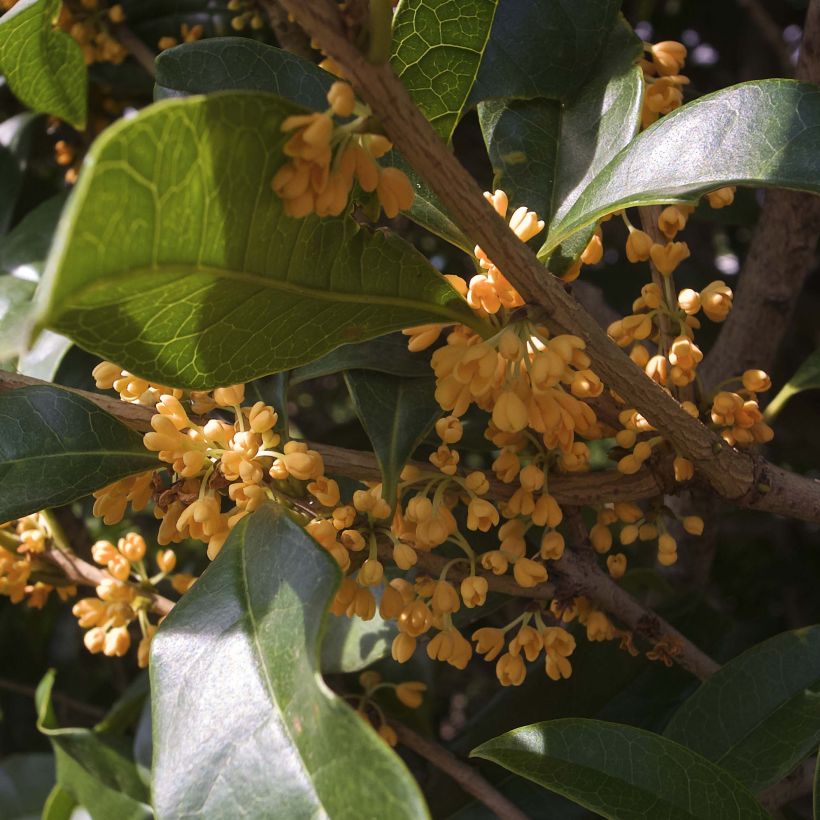

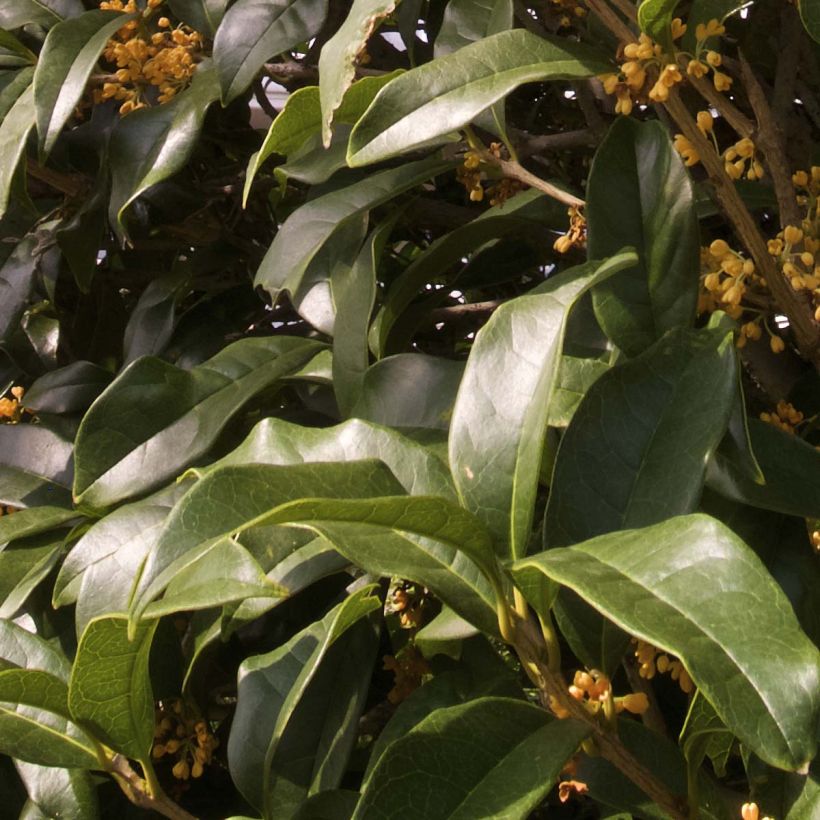

Plant habit
Flowering
Foliage
Botanical data
Osmanthus
fragrans
var. aurantiacus
Oleaceae
Sweet Osmanthus, Fragrant Olive, Tea Olive, Sweet Olive
China
Other Osmanthus
View all →Planting and care
Place Osmanthus fragrans f. aurantiacus in spring in a borderline hardiness zone or preferably at the end of summer in our dry and warm regions. Install it in full sun or partial shade, avoiding cold winds but providing good ventilation. It is a plant that loves heat and mild winters. Plant it in an ordinary soil that is deep enough, rather light, fertile, but well-draining. If your soil seems too heavy and clayey, incorporate leaf compost and coarse sand or gravel into the planting substrate. The young Osmanthus fragrans is sensitive to cold, so it will be necessary to protect it during the first winters in most of our regions: mulch its stump and cover it with a winter veil if strong frosts are forecasted. Once well established, the bush will withstand brief frosts (such as late at night) of around -10°C (14 °F). After 2 or 3 years of cultivation, if it is regularly watered in summer, it will resist drought quite well if it is planted in deep soil. Prepare a nice planting hole (50cm (19.7 in) in all directions), filled with your well-draining mixture. Give it a generous watering at planting, meaning once or twice a week, to promote establishment. Then continue with normal watering. In case of dry and hot summer, water generously once a week or every 15 days for recently planted subjects. Pruning, if necessary, should be done at the end of winter.
Planting period
Intended location
Care
-
, onOrder confirmed
Reply from on Promesse de fleurs
Similar products
Haven't found what you were looking for?
Hardiness is the lowest winter temperature a plant can endure without suffering serious damage or even dying. However, hardiness is affected by location (a sheltered area, such as a patio), protection (winter cover) and soil type (hardiness is improved by well-drained soil).

Photo Sharing Terms & Conditions
In order to encourage gardeners to interact and share their experiences, Promesse de fleurs offers various media enabling content to be uploaded onto its Site - in particular via the ‘Photo sharing’ module.
The User agrees to refrain from:
- Posting any content that is illegal, prejudicial, insulting, racist, inciteful to hatred, revisionist, contrary to public decency, that infringes on privacy or on the privacy rights of third parties, in particular the publicity rights of persons and goods, intellectual property rights, or the right to privacy.
- Submitting content on behalf of a third party;
- Impersonate the identity of a third party and/or publish any personal information about a third party;
In general, the User undertakes to refrain from any unethical behaviour.
All Content (in particular text, comments, files, images, photos, videos, creative works, etc.), which may be subject to property or intellectual property rights, image or other private rights, shall remain the property of the User, subject to the limited rights granted by the terms of the licence granted by Promesse de fleurs as stated below. Users are at liberty to publish or not to publish such Content on the Site, notably via the ‘Photo Sharing’ facility, and accept that this Content shall be made public and freely accessible, notably on the Internet.
Users further acknowledge, undertake to have ,and guarantee that they hold all necessary rights and permissions to publish such material on the Site, in particular with regard to the legislation in force pertaining to any privacy, property, intellectual property, image, or contractual rights, or rights of any other nature. By publishing such Content on the Site, Users acknowledge accepting full liability as publishers of the Content within the meaning of the law, and grant Promesse de fleurs, free of charge, an inclusive, worldwide licence for the said Content for the entire duration of its publication, including all reproduction, representation, up/downloading, displaying, performing, transmission, and storage rights.
Users also grant permission for their name to be linked to the Content and accept that this link may not always be made available.
By engaging in posting material, Users consent to their Content becoming automatically accessible on the Internet, in particular on other sites and/or blogs and/or web pages of the Promesse de fleurs site, including in particular social pages and the Promesse de fleurs catalogue.
Users may secure the removal of entrusted content free of charge by issuing a simple request via our contact form.
The flowering period indicated on our website applies to countries and regions located in USDA zone 8 (France, the United Kingdom, Ireland, the Netherlands, etc.)
It will vary according to where you live:
- In zones 9 to 10 (Italy, Spain, Greece, etc.), flowering will occur about 2 to 4 weeks earlier.
- In zones 6 to 7 (Germany, Poland, Slovenia, and lower mountainous regions), flowering will be delayed by 2 to 3 weeks.
- In zone 5 (Central Europe, Scandinavia), blooming will be delayed by 3 to 5 weeks.
In temperate climates, pruning of spring-flowering shrubs (forsythia, spireas, etc.) should be done just after flowering.
Pruning of summer-flowering shrubs (Indian Lilac, Perovskia, etc.) can be done in winter or spring.
In cold regions as well as with frost-sensitive plants, avoid pruning too early when severe frosts may still occur.
The planting period indicated on our website applies to countries and regions located in USDA zone 8 (France, United Kingdom, Ireland, Netherlands).
It will vary according to where you live:
- In Mediterranean zones (Marseille, Madrid, Milan, etc.), autumn and winter are the best planting periods.
- In continental zones (Strasbourg, Munich, Vienna, etc.), delay planting by 2 to 3 weeks in spring and bring it forward by 2 to 4 weeks in autumn.
- In mountainous regions (the Alps, Pyrenees, Carpathians, etc.), it is best to plant in late spring (May-June) or late summer (August-September).
The harvesting period indicated on our website applies to countries and regions in USDA zone 8 (France, England, Ireland, the Netherlands).
In colder areas (Scandinavia, Poland, Austria...) fruit and vegetable harvests are likely to be delayed by 3-4 weeks.
In warmer areas (Italy, Spain, Greece, etc.), harvesting will probably take place earlier, depending on weather conditions.
The sowing periods indicated on our website apply to countries and regions within USDA Zone 8 (France, UK, Ireland, Netherlands).
In colder areas (Scandinavia, Poland, Austria...), delay any outdoor sowing by 3-4 weeks, or sow under glass.
In warmer climes (Italy, Spain, Greece, etc.), bring outdoor sowing forward by a few weeks.































